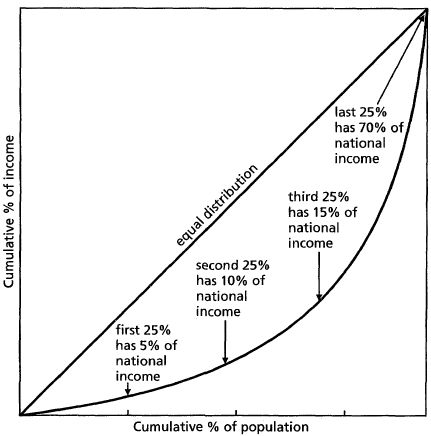
“$10.00 LTV am I right?”
You’ve soft launched your game, done a UA push, and a string of hope appears. Against all odds, a dominant cohorted ARPU curve emerges! Is this this an anomaly or have you caught a whale?
The first way to examine this is to perform cointegration tests between the cohorted ARPU curves, testing for stastistical significance. It may be true the difference in the curves are real, but that doesn’t answer if you’ve caught a whale.
In 1905, Michael Lorenz developed a method for measuring relative inequality between nations known as the Lorenz curve.

Just keep saying what % of the population owns what % of the wealth and it’ll make sense.
The F2P application is to define wealth as revenue (either on a daily or game level) and players as the population in the context of free to play games. By measuring how bent inwards a cohorted Lorenz curve is relative to other cohorted Lorenz curves we can measure the ‘whali-ness’™ of different cohorts. Even better is how this reduces to a single metric – the gini coefficient. A gini coefficient of zero indicates a perfectly equal distribution of income, 10% of the population owns 10% of the wealth, 20% of the population owns 20% of the wealth and so on and so forth. A gini coefficient of 1 is the exact opposite – a single person owns 100% of the wealth.
This translates to what % of players are responsible what % of the revenue. Measuring gini coefficients across games rather than cohorts gives more insight into how a particular game monetizes – whether it’d be whale, dolphin, or minow driven.
Actionable insights might include how effective introducing ads could be. A high gini coefficient (very few players are responsible for revenue) might mean there’s a more fertile base to monetize on.
The main insight, however, is further understanding. It’s clear that success can come about in drastically different ways in free to play games, the gini coefficient is simple way to measure that.